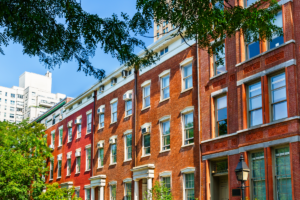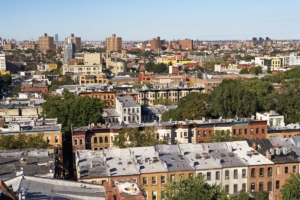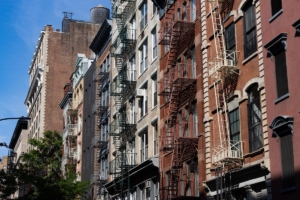As sales prices and competition continue to rise in Manhattan, all eyes seem to have turned north to the relative value above 110th street. Homes in Upper Manhattan, which includes neighborhoods such as Inwood, Washington Heights and Central Harlem, have experienced the highest annual resale price growth among all five of Manhattan’s major submarkets for 10 consecutive months.
According to StreetEasy’s Manhattan Price Index, the median resale price of all homes in Upper Manhattan jumped 19 percent in September from the previous year to $638,569. Upper Manhattan’s red-hot price growth was three times greater than Manhattan (6.3 percent) and well ahead of the next fastest Manhattan submarket – the Upper West Side, where resale prices rose 9.6 percent of the last year.
In short, Upper Manhattan is having a moment.
[tableau server=”public.tableau.com” workbook=”priceIndices” view=”upperManhattan” tabs=”no” toolbar=”no” revert=”” refresh=”yes” linktarget=”” width=”615px” height=”370px”][/tableau]
The graph above charts the median resale price of all homes in Manhattan and in Upper Manhattan using the StreetEasy Price Indices. A notable trend is how annual price growth in Upper Manhattan (the thin blue line) has outpaced Manhattan since November 2014 and has consistently grown since. Annual price growth in Upper Manhattan reached its fastest pace in September since at least 2007.
The recent momentum in Upper Manhattan is driven by the relative value of homes there. Although prices are growing at the fastest rate, the median resale price in September ($638,569) was still 35 percent below Manhattan’s median resale price of $982,958. This area is one of the last pockets of relative value in Manhattan, a fact that is not lost on homebuyers. According to the StreetEasy Q3 2015 Quarterly Market Report, Upper Manhattan is one of the most competitive markets for buyers, with the typical home selling for 1.4 percent above the seller’s initial asking price. Bidding wars have become a more common phenomenon as buyers bid against each other, leading to a final sale price that is usually above the home’s listed price.
We dug a bit deeper into sales that have occurred since the beginning of September to pinpoint which types of units have seen the greatest price appreciation. In the map below, we’ve charted the most recent sales that have occurred since September 1 and listed their annualized return based on recorded sales prices provided by the New York City Department of Finance.
[tableau server=”public.tableau.com” workbook=”upperManhattanAnalysis” view=”salesMapUM” tabs=”no” toolbar=”no” revert=”” refresh=”yes” linktarget=”” width=”615px” height=”630px”][/tableau]
The results show that recent sales in Washington Heights and Central Harlem in particular have fetched the greatest annualized returns.
One recent sale at Towers on the Park at 301 Cathedral Parkway, a large condo complex, resulted in a 9.4 percent annualized return for the seller. Another sale at 5th on the Park, a large and recently developed condo building, resulted in a very healthy 11.7 percent annualized return.
High rates of return are not isolated to condo units, either. A recent sale at 250 Cabrini Boulevard, a large pre-war co-op building in Washington Heights, resulted in a 21.6 percent annualized return for the seller, underscoring how even older units are highly attractive to today’s buyer.
Upper Manhattan’s moment will last a while. New restaurants and retail, a recent upzoning of sections of Central Harlem, and the promise of relative affordability amount to a compelling value proposition for New Yorkers on the hunt for a home. With certain buyers priced out of Downtown and Midtown and even sections of Brooklyn, expect more competition to roam north of 110th Street.









